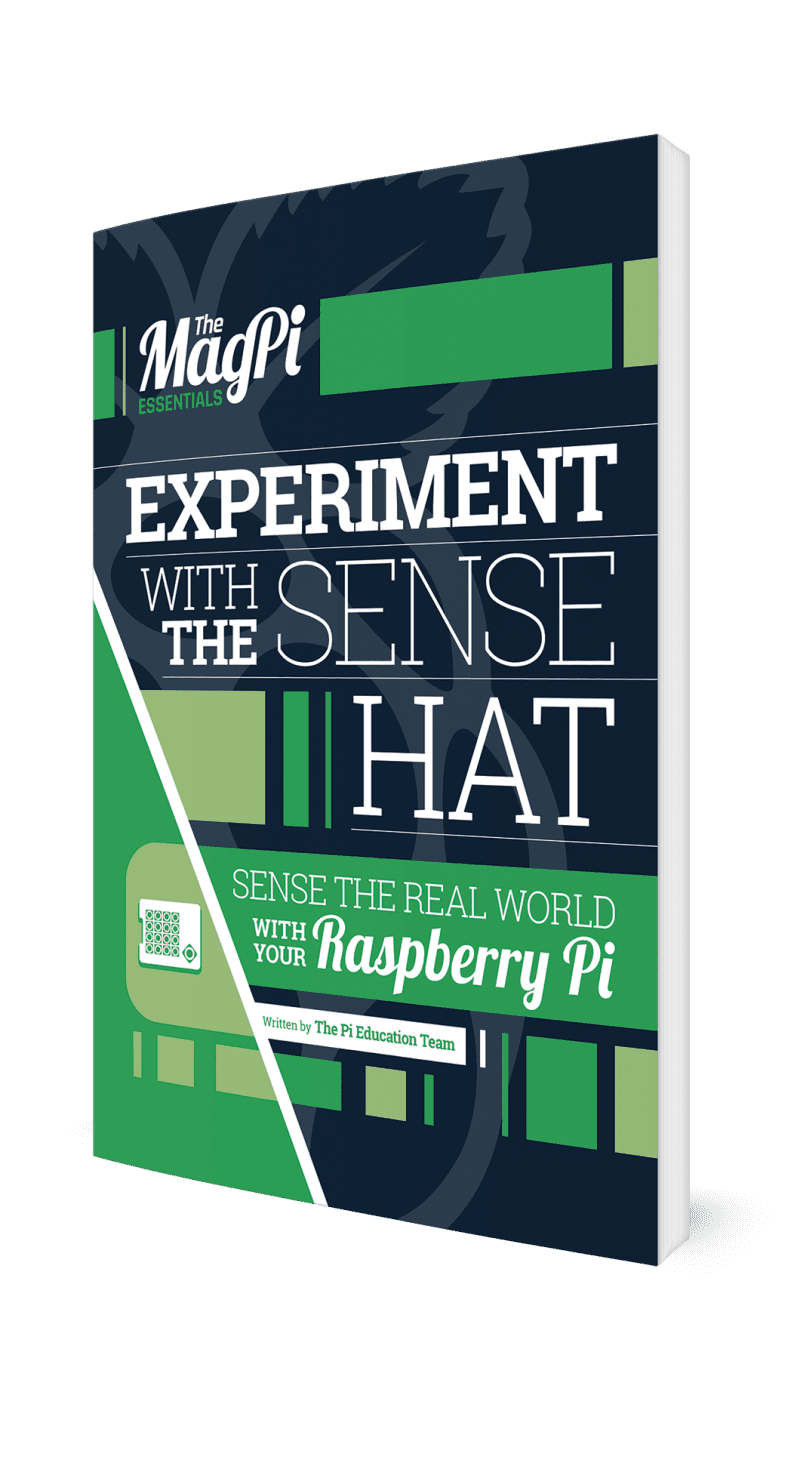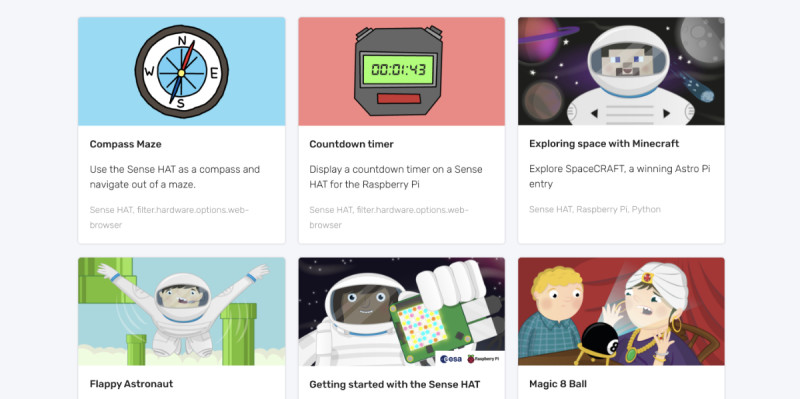Astro Pi resources
This versatile board was designed especially for a space mission. Two Astro Pi units
– comprising a Raspberry Pi with Sense HAT in a special case – are currently
aboard the International Space Station (ISS), orbiting 408km above the Earth. Astro Pi is an ESA (European Space Agency) project run with the Raspberry Pi
Foundation. It enables young people to conduct scientific investigations in space by
writing computer programs that run on the Astro Pi devices aboard the ISS. Students
up to 19 years old can take part in the Mission Space Lab, while those 14 and under
can get involved in the simpler Mission Zero. Even if you don’t want to take part, Astro Pi has a solid set of resources designed to
help students set up the Sense HAT and collect data from it.
Experiment with the Sense HAT
While no longer available in print form, this compact book from The MagPi Essentials
range can still be downloaded as a free PDF. An extensive feature on the Astro Pi
mission details how the units were designed and then launched into space to reach
their new home on the International Space Station – to be joined by British ESA
astronaut Tim Peake soon after.
The book then launches into some step-by-step tutorials to help you get started with
your Sense HAT, demonstrating how to display images on the LED matrix and how
to read the various sensors on board, including the gyroscope, accelerometer, and
magnetometer. Fun projects to code include a Gravity Simulator, Digital Magic 8 Ball,
Interactive Pixel Pet, Astronaut Reaction Times Game, and Data Logger.
Raspberry Pi Projects
The Raspberry Pi Foundation’s learning resources website features several tutorials
to help you get started with your Sense HAT and make some fun projects with it
using Scratch or Python. Even if you don’t own a Sense HAT yet, you can
experiment with writing Python programs in an online emulator to see the effects.
Start with a simple Countdown Timer on the board’s LED matrix, before moving on to
games such as Flappy Astronaut, Marble Maze, Tightrope, and Pong. More complex projects include an MP3 Music Player and Weather Logger. There's
even a tutorial to explore SpaceCRAFT – a winning Astro Pi competition project – in which you can visualise data from the Sense HAT’s sensors in the Minecraft world.


Schreibe einen Kommentar
Du musst angemeldet sein, um einen Kommentar abzugeben.